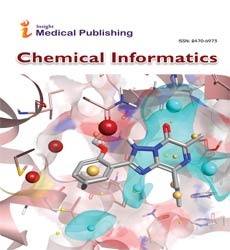Abstract
Structural Features on Polymorphism of Diclofenac Acid
Objective:
In this report, three dimensional structure of lanosterol 14-α demethylase (CYP51) protein of Candida albicans was modeled and used for docking studies with eighteen synthetic triazole derivatives.
Methods:
The model was generated by multiple threading alignment and iterative structure assembly simulation by I-TASSER and validated by Ramachandran plot using PROCHECK and MolProbity servers. The eighteen 1,2,3-triazole compounds were previously synthesized using two different synthetic routes by our research group in the search of new antifungal agents. The binding affinity and interaction of all triazole compounds with predicted model of CYP51 were determined by AutoDock Vina.
Results:
I-TASSER generated five models in which Model 1 was selected as best predicted structure on the basis of C-score 1.30, TM-score 0.89 ± 0.07, and RMSD 4.7 ± 3.1 Å. It showed 89.2% residues in most favoured region and 7.1% residues in additional allowed regions. Docking results showed that all the derivatives have good binding energy in the range -9.8 to -7.4 kcal/mol. Moreover, compound NT- 03 (-9.8 kcal/mol) was found as best inhibitor as it binds nicely into the active site of the enzyme.
Conclusion:
The study suggests that I-TASSER is very easy and reliable tool for three dimensional structure predictions. The N-atom in quinoline ring of compound NT- 03 involved in the additional interaction with predicted model of CYP51. Finally, I-TASSER might be used as an important tool in drug designing process in search of more effective therapies.
Author(s):
Borges RS,Carvalho ES, Gabriel S Cabral, Taina G Barros, Carlos A L Barros, Agnaldo S Carneiro
Abstract | Full-Text | PDF
Share this

Google scholar citation report
Citations : 173
Chemical Informatics received 173 citations as per google scholar report
Abstracted/Indexed in
- Google Scholar
- China National Knowledge Infrastructure (CNKI)
- Directory of Research Journal Indexing (DRJI)
- WorldCat
- Geneva Foundation for Medical Education and Research
- Secret Search Engine Labs
- CAS (Chemical Abstracting Services)
Open Access Journals
- Aquaculture & Veterinary Science
- Chemistry & Chemical Sciences
- Clinical Sciences
- Engineering
- General Science
- Genetics & Molecular Biology
- Health Care & Nursing
- Immunology & Microbiology
- Materials Science
- Mathematics & Physics
- Medical Sciences
- Neurology & Psychiatry
- Oncology & Cancer Science
- Pharmaceutical Sciences

